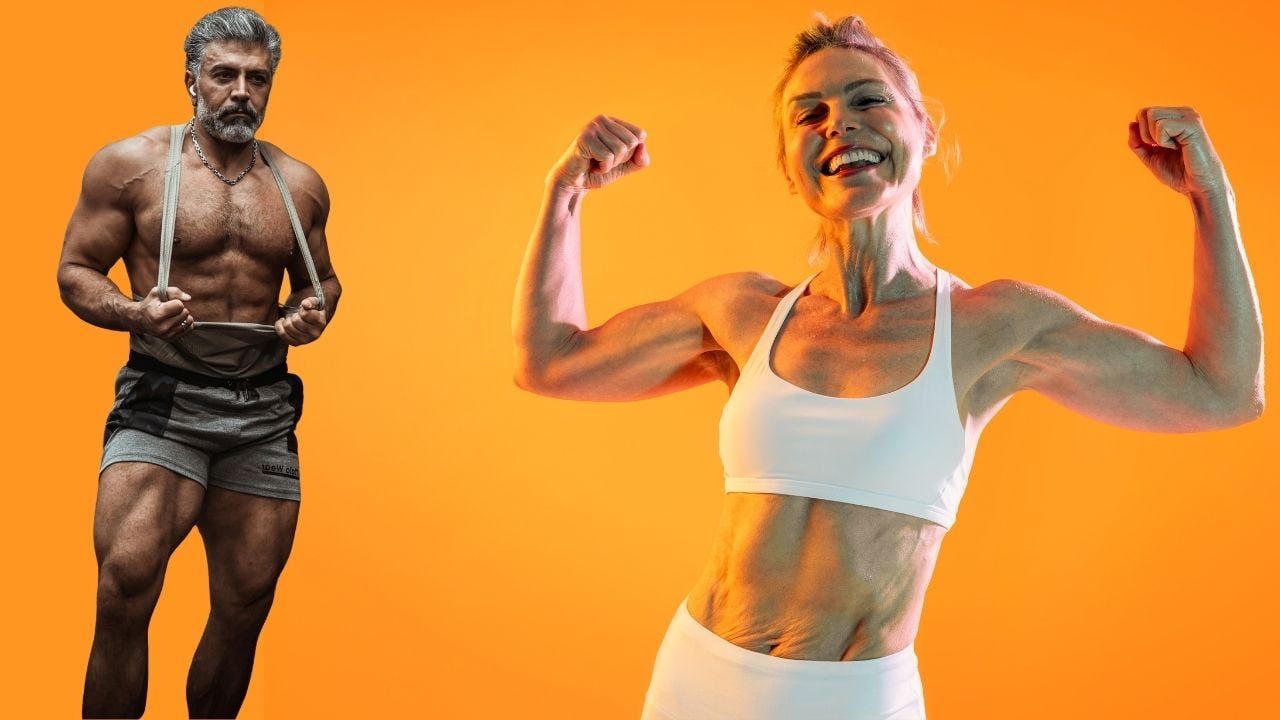Why Calisthenics Is Perfect for Adults Over 60
When I talk to people over 60 who are interested in getting active again, one of the first things I tell them is this: your body is still capable of incredible progress. You can get stronger, more stable, more mobile, and more energetic than you may have felt in decades — and you don’t need a gym membership, heavy weights, or complicated equipment to get there.
Calisthenics, in the context of training older adults, simply means using your own bodyweight as resistance. It’s exercise in its most natural form: squatting, pushing, pulling, balancing, stepping, bracing, reaching. And what I love about calisthenics — especially for my clients in their 60s, 70s, and beyond — is that it adapts beautifully to any fitness level.
You can train at home, at your own pace, with low-impact movements that protect your joints, strengthen your muscles, and dramatically reduce your risk of falls or injuries. I’ve seen people improve their health markers, posture, and confidence within just a month of consistent practice.
And the best part? You don’t need to buy anything to start, like I demonstrate in this ▶️ Beginner Friendly Calisthenics Routine - No Equipment.
But having a few inexpensive, senior-friendly pieces of equipment can make your training more comfortable, safer, and more effective — especially as you progress.
This article is a complete guide to the best optional calisthenics equipment for adults over 60, based on what I personally use with my senior clients. Each piece is:
- Safe
- Affordable
- Easy to store
- Beginner-friendly
- Useful for long-term progress
I’ll also explain the types of exercises I recommend for older adults, which muscles need special attention as we age, and how to set yourself up for safe, sustainable training that you can enjoy for years.
Why Exercise Matters More Than Ever After 60
I’ve trained older adults for years, and I can tell you with confidence: the human body remains adaptable at every age. But after 60, a few things naturally begin to decline — unless you actively challenge them:
1. Muscle mass and strength decline
Adults over 60 lose muscle approximately 1–2% per year unless they strength-train.
The good news? With simple exercises, you can stop this decline completely — and even build muscle.
2. Balance becomes less reliable
Most falls happen not because someone is “clumsy,” but because:
- Leg muscles weaken
- Ankles stiffen
- Reflexes slow
- Core strength is low
Targeted calisthenics fixes all of this.
3. Joint mobility decreases
Gentle bodyweight training helps maintain lubrication in the joints and reduces stiffness — especially in the shoulders, hips, and spine.
4. Cardiovascular health needs support
Short, controlled movements that raise your heart rate are powerful at improving endurance and lowering blood pressure.
5. Daily life becomes easier
This is the benefit that matters most to many of my clients. Training improves:
- Getting up from chairs
- Climbing stairs
- Carrying groceries
- Reaching overhead
- Walking without fear of falling
You become more independent, more confident, and more capable.
The Best Calisthenics Equipment for Adults Over 60
Below are the tools I use most often with my clients. I’ve tested all of them myself and I chose them specifically because they’re safe, simple, joint-friendly, and effective.
Summary Table:
| Equipment | Purpose / Key Benefit | Amazon Link |
| Non-Latex Resistance Bands | Joint-friendly strength training, posture work | https://amzn.to/3K4yTUB |
| Multifunctional Workout Bench | Safe seated/elevated exercises, step-ups, incline push-ups | https://amzn.to/4i7t99g |
| Weighted Vest (Light, Adjustable) | Safe progression for walking, squats, bone density | https://amzn.to/4nXn68p |
| Thick Foldable Yoga Mat | Comfort for floor and kneeling exercises, easy storage | https://amzn.to/48qf2Yj |
| Neoprene Non-Slip Dumbbells | Light upper-body strength, posture, farmer carries | https://amzn.to/4o5L3dZ |
| Squat Wedge Block | Deeper, safer squats; reduces knee strain | https://amzn.to/4i9k1RB |
| Parallettes (Low Wooden) | Wrist-friendly push-ups, planks, shoulder stability | https://amzn.to/447820Q |
| Pull-Up / Hanging Bar | Spinal decompression, shoulder mobility, band rows | https://amzn.to/487HfTz |
| Grip Strength Trainer | Stronger hands/wrists, better daily function, fall prevention | https://amzn.to/3K282ID |
| Exercise Ball (Anti-Burst) | Core stability, seated strength work, mobility | https://amzn.to/4i2U3Pq |
1. Non-Latex Resistance Bands
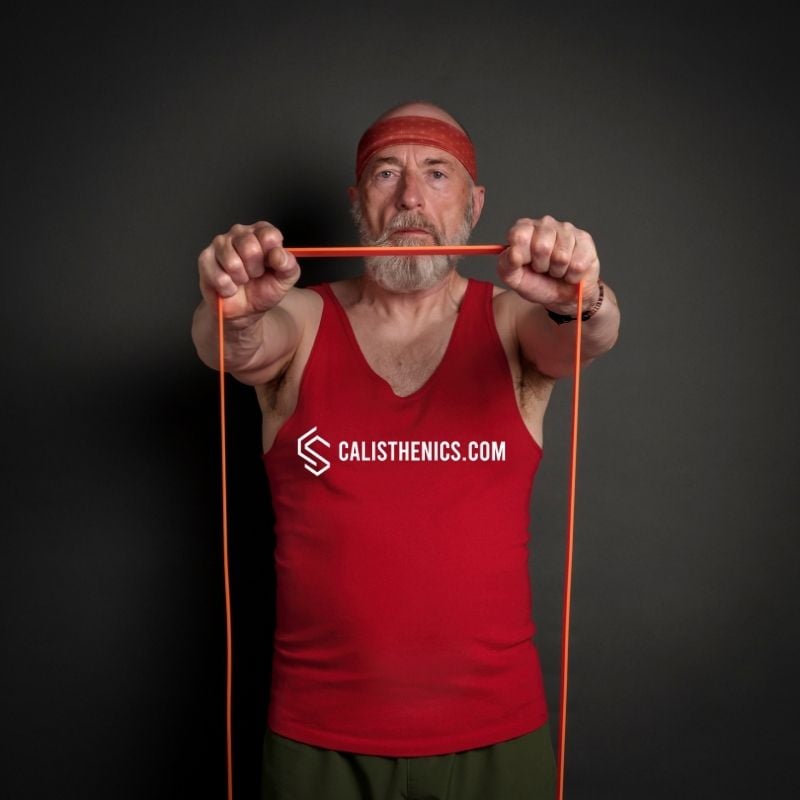
👉 Check Resistance Bands on Amazon
These non-latex resistance bands are one of my absolute favorite tools for seniors — and one of the few I consider “essential.”
Why they’re perfect for people over 60:
- They provide gentle, joint-safe resistance
- They’re ideal for rehab-style exercises
- Great for strengthening the back, shoulders, and posture
- They help you do assisted movements (like squats or standing rows)
- They’re lightweight and easy to store
- Non-latex = safer for sensitive skin
Great exercises using bands:
- Standing rows
- Chest pulls
- Bicep curls
- Face pulls
- Band-assisted squats
- Seated or standing shoulder strengthening
I use these in almost every session with older clients because they add challenge without adding risk.
2. Multifunctional Workout Bench

👉 Check Multifunctional Workout Bench on Amazon
A good bench is a game-changer for older adults because it allows safe modifications for exercises that may be too difficult — or too uncomfortable — on the floor.
What I love about this bench:
- It adjusts to multiple angles
- It’s stable and supportive
- Makes exercises safer for seniors with knee or back issues
- Ideal for elevated push-ups, seated exercises, and step-ups
- Folds or stores easily
Useful exercises on a bench:
- Seated shoulder presses
- Supported rows
- Incline push-ups (easier than floor push-ups)
- Step-ups
- Bench squats
- Hip thrusts
It gives you endless options for strength training, all without getting down to the floor.
3. Weighted Vest (Light, Adjustable)
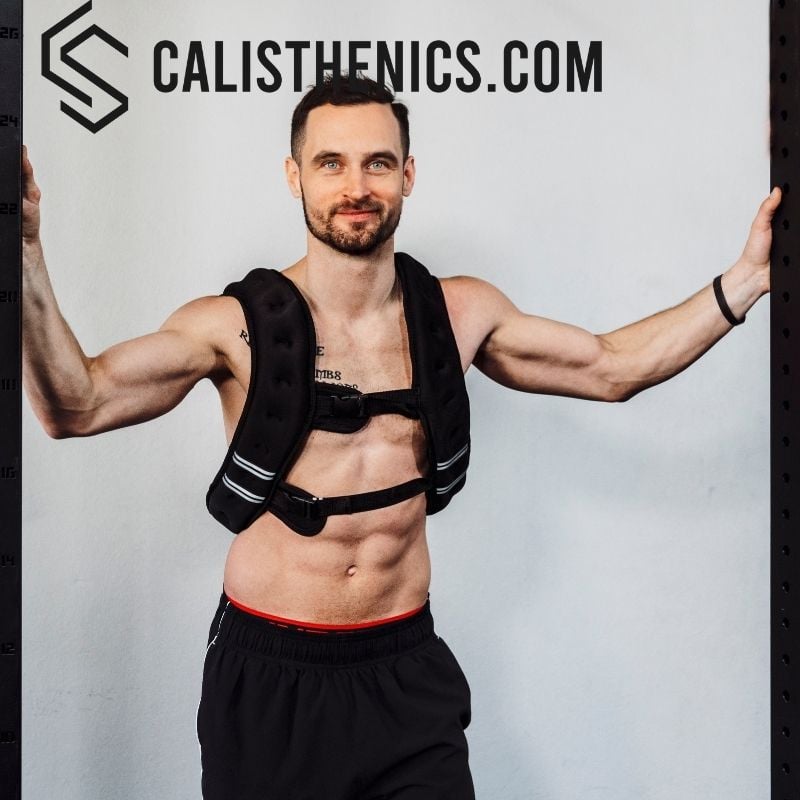
👉 Check Weighted Vest on Amazon
Let me be clear: you do not need a weighted vest to start.
But for seniors who’ve been training for a few weeks or months, adding just 1–5 kg of weight is a fantastic way to increase strength safely.
Why I recommend this vest:
- It’s not too heavy or bulky
- Weight is evenly distributed
- You can adjust the load
- Great for improving bone density
- Perfect for walking, step-ups, or squats
I only introduce this with clients who are comfortable and confident — but it’s one of the safest ways to progress without straining your joints.
4. Thick Foldable Yoga Mat
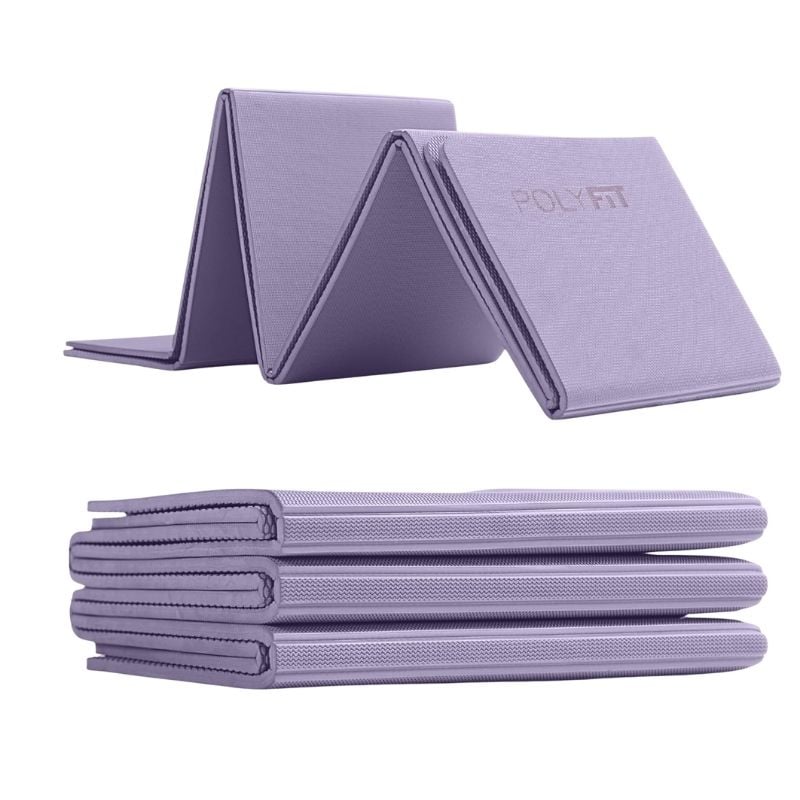
👉 Check Foldable Yoga Mat on Amazon
As we get older, floor work can become uncomfortable — especially on the knees, wrists, or spine. A thick, foldable mat makes training significantly more enjoyable.
Why this mat works especially well for older adults:
- Extra cushioning
- Folds into sections for easy storage
- Doesn’t slide around
- Great for kneeling and seated exercises
- Easier to get up from than thin mats
Even if you train mostly standing or seated, having a comfortable mat opens doors for important exercises like gentle core work and mobility.
5. Neoprene Non-Slip Dumbbells (Lightweight)
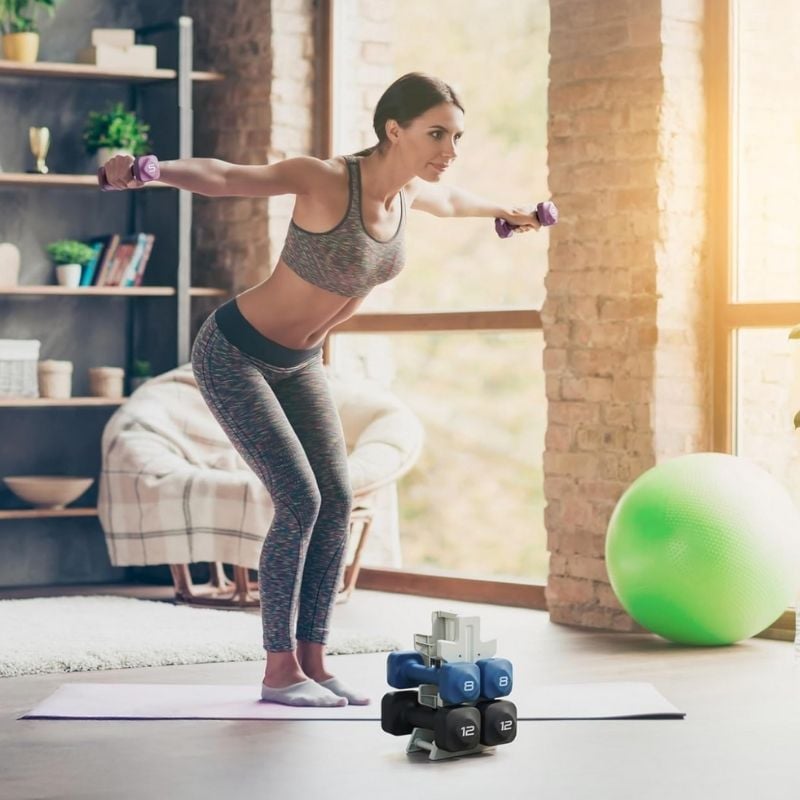
👉 Check Neoprene Dumbbells on Amazon
Even though calisthenics focuses on bodyweight, I often use light dumbbells with older clients — not to “lift heavy,” but to build strength safely.
Why neoprene dumbbells are perfect for seniors:
- Comfortable grip
- Won’t slip even if your hands get warm
- Gentle on wrists
- Ideal for low-impact upper-body work
- You don’t need heavy weight — even 1–3 kg is enough
Exercises I use dumbbells for:
- Shoulder strength work
- Arm toning (biceps/triceps)
- Farmer carries for grip and balance
- Weighted marches
- Posture training
They’re small, safe, and extremely useful.
6. Squat Wedge Block

👉 Check Squat Wedge Block on Amazon
This might seem like an unusual recommendation — but squat wedges are incredibly useful for older adults with stiff ankles or knee discomfort.
Benefits of using a squat wedge:
- Allows you to squat deeper with better form
- Reduces strain on the lower back
- Keeps your knees comfortable
- Helps improve leg strength safely
Why I use it:
Many people over 60 have lost calf mobility over the years. A squat wedge instantly fixes this by letting you position your heels slightly higher. I’ve seen clients who “couldn’t squat” suddenly perform beautiful, pain-free reps with a wedge.
7. Parallettes (Low to Mid Height)
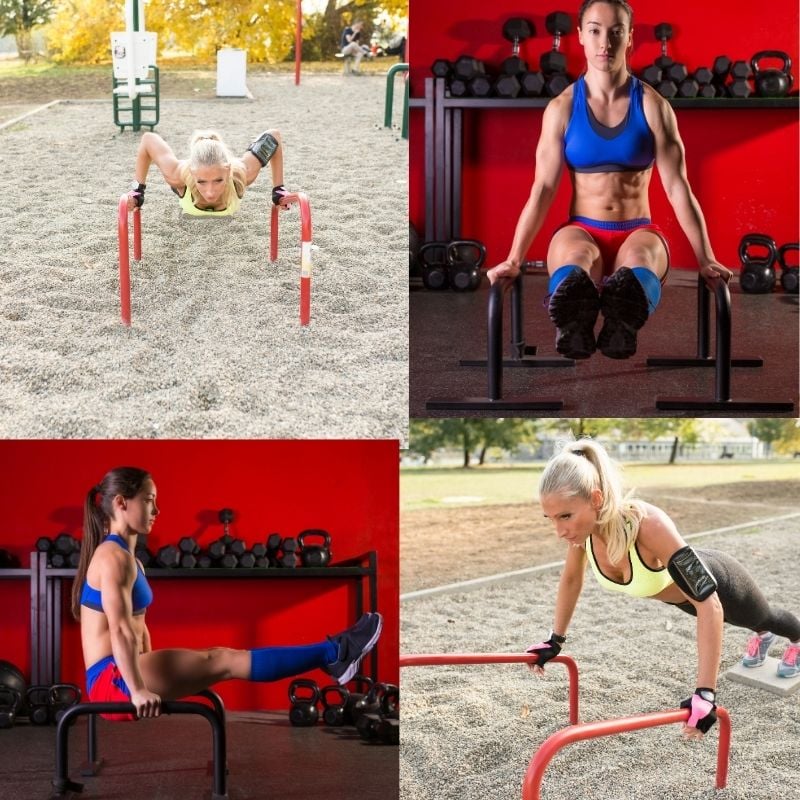
Parallettes aren’t just for advanced athletes. Low, stable parallettes are fantastic for older adults — especially for wrist comfort.
Why parallettes help seniors:
- Keep wrists in a neutral, pain-free position
- Support better push-up technique
- Great for elevated planks
- Useful for balance and grip training
- Solid and safe
Exercises I do with seniors on parallettes:
- Incline push-ups
- Plank holds
- L-sit progressions (seated variations)
- Modified dips (gentle only)
- Shoulder taps
If wrist pressure has ever stopped you from doing push-ups, parallettes will solve it.
8. Doorway Pull-Up Bars
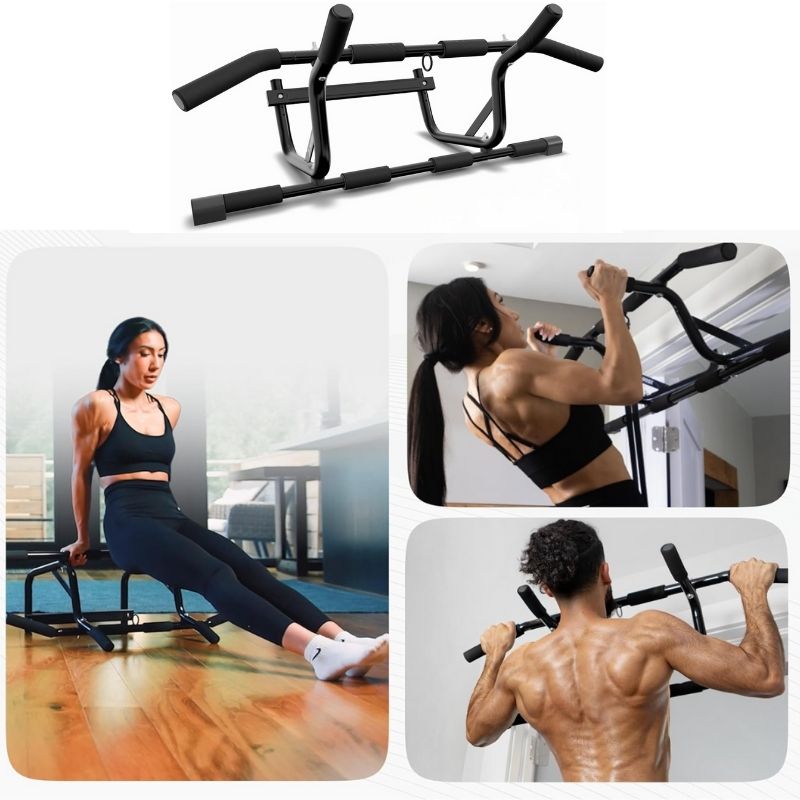
👉 Check Doorway Pull-Up Bar on Amazon
Now, let me be clear: I don’t expect adults over 60 to do pull-ups.
However, a pull-up bar is extremely useful for:
- Hanging for spinal decompression
- Shoulder mobility
- Assisted back and arm exercises
- Gentle traction for posture
- Band-based rows
Even if you never do a pull-up, hanging with both feet lightly touching the ground can relieve back tension and improve shoulder function dramatically.
This bar is secure, easy to install, and works with bands perfectly.
9. Grip Strength Trainer (Adjustable Hand Gripper)

👉 Check Grip Strength Trainer on Amazon
Grip strength is one of the most important — yet most overlooked — fitness markers for adults over 60. In fact, research consistently shows that grip strength strongly correlates with overall longevity, independence, and fall prevention. That’s why I use grip trainers with almost all my senior clients.
This adjustable hand gripper is perfect because you can start very light and gradually increase the resistance as your hands, wrists, and forearms get stronger.
Why a grip trainer is incredibly valuable for older adults:
- Builds stronger hands and wrists
- Improves your ability to carry groceries, lift objects, open jars
- Helps prevent falls by improving reflexive grip
- Supports forearm strength for posture and back training
- Easy to use while sitting, watching TV, or during warm-ups
- Adjustable resistance makes it suitable for total beginners
How I use it with clients:
- 2–3 sets of slow squeezes (8–12 reps per hand)
- 20–30 second isometric holds
- Alternating squeezes during balance training
- “Endurance” squeezes with lighter resistance
A strong grip translates into stronger arms, better posture, and greater confidence during everyday activities. And because this trainer is small, safe, and incredibly easy to use, it’s one of the best low-cost tools you can add to your routine.
10. Exercise Ball (Anti-Burst Stability Ball)
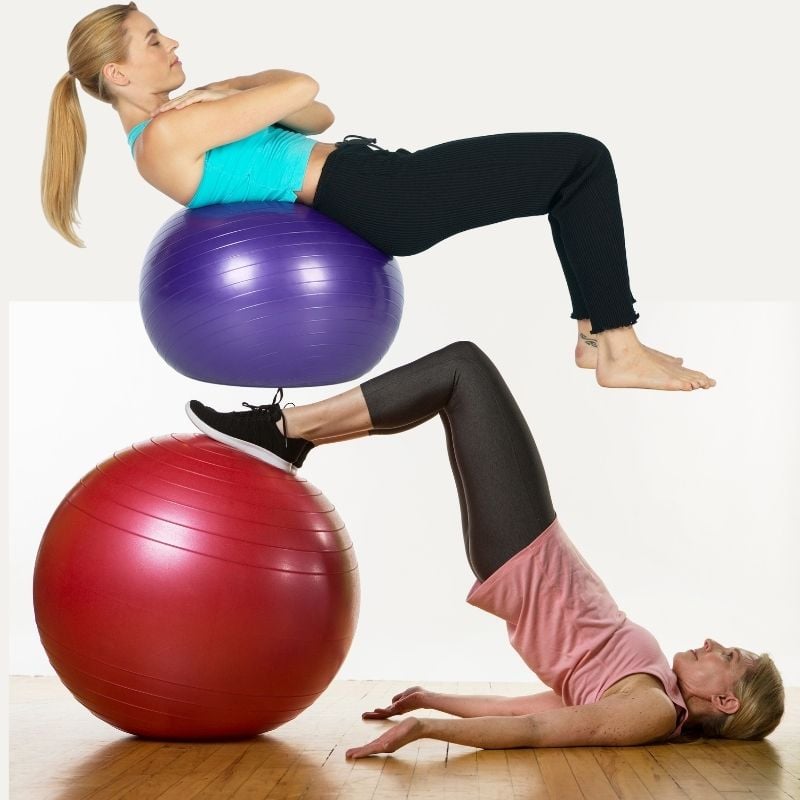
👉 Check Exercise Ball on Amazon
An exercise ball is one of the most underrated tools for adults over 60 — and honestly, I use it far more with seniors than with younger clients. Why? Because it makes core training safer, adds a gentle instability that builds balance, and provides support for people who aren’t ready for floor exercises.
The model I’m recommending is anti-burst, thick, stable, and designed to support higher weight loads, which is extremely important when working with older populations.
Why an exercise ball is perfect for adults over 60:
- Provides a soft, supportive surface for seated exercises
- Helps strengthen the deep core muscles that protect your lower back
- Improves balance and stability in a safe, low-risk way
- Perfect for mobility work if the floor is uncomfortable
- Allows seniors to train the hips and spine through a full range of motion
- Great alternative to chairs for posture training
How I use the exercise ball with my clients:
- Seated marches to improve hip strength
- Gentle pelvic tilts for lower-back health
- Seated dumbbell or band exercises for upper body strength
- Wall-supported ball squats (amazing for knee comfort)
- Back extensions with stomach on the ball
- Core training with minimal pressure on wrists and neck
Why it’s especially helpful for beginners:
Many older adults have difficulty getting down to the floor or feel uncomfortable lying on their back. The exercise ball solves this by offering a stable middle-ground between standing and floor positions.
It also promotes natural movement patterns — instead of forcing perfect rigidity, the ball encourages micro-adjustments, which are fantastic for strengthening the stabilizer muscles that keep you steady throughout the day.
What Training Should Look Like for Adults Over 60
When I design training sessions for people in this age group, I always focus on safety first, then strength, then mobility, then balance and coordination.
Here’s what that means in practice.
1. Focus on Full-Body Strength (especially legs and back)
The two areas I always pay close attention to are:
Leg Strength
Strong legs prevent falls and improve mobility. Priorities include:
- Quadriceps (front of thighs)
- Glutes (butt muscles)
- Hamstrings (back of thighs)
- Calves
- Tibialis anterior (shin muscles, important for preventing tripping)
Exercises I commonly use:
- Chair squats
- Step-ups
- Glute bridges
- Split stance holds
- Calf raises
- Tib raises
Back and Posture Strength
The upper back tends to weaken with age, leading to rounded posture, neck pain, and shoulder issues.
Key muscles:
- Rhomboids
- Lats
- Lower traps
- Rotator cuff
- Spinal erectors
Exercises:
- Band rows
- Wall slides
- Face pulls
- Scapular retractions
- Bird-dogs
2. Prioritize Balance and Core Training
Falls are one of the biggest concerns for older adults — and one of the most preventable.
I incorporate balance training in almost every session:
- Standing marches
- Single-leg holds with support
- Heel-to-toe walking
- Lateral step-touches
- Farmer carries
And core training is essential for stability:
- Seated knee lifts
- Plank variations (modified or wall-based)
- Dead bugs
- Side planks (on a bench or elevated)
3. Keep Mobility Gentle and Consistent
I encourage daily mobility work, even if it’s just five minutes:
- Shoulder circles
- Ankle mobility
- Hip openers
- Cat-cow
- Thoracic rotations
Mobility isn’t about stretching aggressively — it’s about keeping your joints happy.
4. Use Equipment Only When It Makes Training Safer or More Effective
People over 60 don’t need:
- Pull-up bars for high reps
- Heavy barbells
- Kettlebells
- Fancy gym machines
But they do benefit from:
- Low-impact resistance
- Comfortable surfaces
- Stable equipment
- Tools that support proper technique
That’s exactly why I recommend the equipment below. It’s truly useful, not intimidating, and perfect for progression.
You Can Absolutely Get Stronger After 60
I’ve seen people in their 60s, 70s, and even 80s regain strength, confidence, balance, mobility, and independence — all without stepping into a gym.
Calisthenics is accessible, safe, practical, and empowering.
And with a few simple tools like the ones above, you can make your training more comfortable, enjoyable, and effective.
If you’re ready to start, any of these tools will help — but even without them, your journey can begin today.

